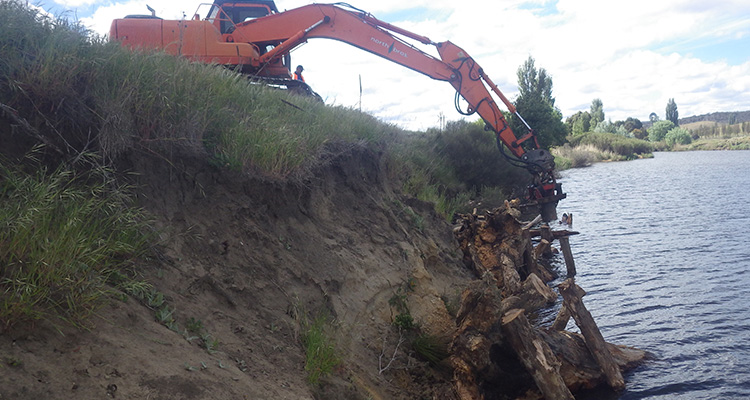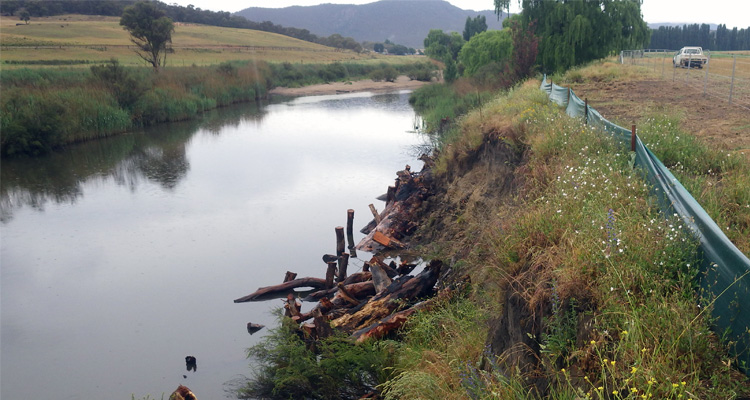Numeral River Restoration
By Brett Jones, Numeralla Fishing Club & Landcare
Since the introduction of the European carp into the Numeralla River, water quality and recreational fishing opportunities have been on the decline. What was once a beautiful, clear mountain stream with an abundance of trout has now become one with high turbidity and a monoculture of carp.
Failing water quality and drought conditions around 10 years ago saw the demise of the trout population. With this in mind, the fishing club started an annual program of introducing Murray cod and golden perch into the river, both of which are far more drought tolerant than trout and have the potential to predate heavily on juvenile carp. Several years later, few native fish had been reported in the system, seemingly as a direct result of the lack of instream habitat.
Habitat like fallen trees and stumps, which were once common in the river and provided valuable feeding and breeding areas, as well as protection against predators, were all but gone. Unfortunately, past practices have seen this instream complexity depleted to such a level that many large fish species no longer find the river a habitable environment.
In response to this, the Numeralla fishing club, Numeralla Landcare and their partner organisations have been actively installing a series of fish hotels and ‘snags’ into the river system to replicate natural habitat. Projects undertaken in 2011, 2013 and 2016 have seen seven priority sites addressed so far within a 12km reach, with other sites currently under investigation, pending the availability of further funding.
The fish habitat project has significant other environmental benefits in terms of bank rehabilitation and biodiversity improvements. The structures when correctly placed assist with the rehabilitation of eroded riverbanks by diverting damaging high flows from fragile banks. With follow-up revegetation at these sites, the community has seen the rapid recovery of badly eroded banks and the return of terrestrial and aquatic life.
Click the button below to learn more about the project






